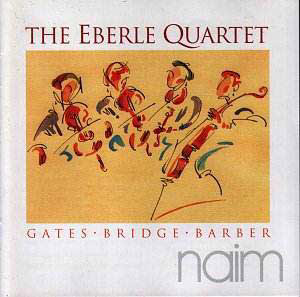 Composer: Sir Charles Hubert Hastings Parry (1848-1918)
Composer: Sir Charles Hubert Hastings Parry (1848-1918)
Works: I Was Glad (orch. Gordon Jacob), Judith: Long Since in Egypt’s Plenteous Land, Blest Pair of Sirens, Jerusalem (orch. Elgar), Songs of Farewell: 1. My Soul, There is a Country, English Lyrics: Bright Star, When Comes My Gwen, O Mistress Mine, Blow, Blow, Thou Winter Wind, A Welsh Lullaby, When Lovers Meet Again, On a Time the Amorous Silvy, When We Two Parted, Love is a Bable, Weep You No More, When Icicles Hang by the Wall, Looking Backward, Take, O Take Those Lips Away, There Be None of Beauty’s Daughters, And Yet I Love Her Till I Die, From a City Window, Thine Eyes Still Shine for Me, Marian, No Longer Mourn for Me, There
Performers: Robert Tear (tenor), Philip Ledger (piano), Choir of Winchester Cathedral, Waynflete Singers, Bournemouth Symphony Orchestra/David Hill
Recording: Recorded in Winchester Cathedral, June 1990; Canterbury Cathedral Choir/Allan Wicks, recorded in Canterbury Cathedral, October 1983
Label: DECCA
Sir Charles Hubert Hastings Parry has often dwelt in the shadows of his more celebrated contemporaries like Elgar and Vaughan Williams, yet his contributions to the choral canon and English song have begun to receive renewed scrutiny. This compilation, featuring a selection of Parry’s anthems, songs, and orchestral works, offers a varied panorama of his stylistic range, albeit one that is not without its challenges and inconsistencies in performance.
The collection opens with “I Was Glad” and “Blest Pair of Sirens,” both orchestrated by Gordon Jacob and Edward Elgar, respectively. While these pieces are staples in the English choral repertoire, they often suffer from a lack of dynamism, particularly in the hands of conductor David Hill. The interpretation leans towards the decorous, which, while fitting for ceremonial works, risks rendering the music somewhat static. The marking “Allegro moderato, ma energico” in “Blest Pair of Sirens” is only partially realized, leading to a performance that, despite its dignity, lacks the necessary drive to elevate the work into the realm of the sublime.
The juxtaposition of public and private aspects of Parry’s oeuvre becomes most apparent in the Songs of Farewell. Robert Tear’s tenor shines with clarity in “My Soul, There is a Country,” yet the interpretation does not fully convey the depth of introspection inherent in the text. The emotional weight of the piece seems diluted, a recurring theme in this collection. The recording from Canterbury Cathedral provides a resonant acoustic but lacks the gravitas one might expect from such profoundly spiritual music.
Tear’s performances of the English lyrics, particularly the Shakespearean settings, showcase his lyrical sensibility, yet they can feel overly restrained. In songs like “O Mistress Mine” and “Blow, Blow, Thou Winter Wind,” the piano accompaniment, played by Philip Ledger, sometimes veers into heavy-handedness, overshadowing the delicate interplay between voice and instrument. The recording’s sound quality is generally clear, though the piano occasionally appears too close-miked, compromising the lushness of the ensemble sound typical of church settings.
The collection’s final offering, “Jerusalem,” while undeniably stirring, risks overshadowing the subtler works presented earlier. It is a piece that has become emblematic of Parry’s legacy, yet its inclusion feels somewhat predictable and perhaps overplayed in this context. The orchestrations, while polished, do not significantly enhance the original choral textures, leaving one to ponder whether the inclusion of lesser-known works would have provided a more nuanced introduction to Parry’s artistry.
This compilation ultimately serves as both a commendation of Parry’s contributions to English music and a reminder of the challenges inherent in reviving works that straddle the line between the familiar and the forgotten. While admirers of British song will appreciate the return of Tear’s recordings to circulation, the interpretative choices made here can leave a sense of incompleteness regarding Parry’s vast emotional landscape. It is a collection that, while valuable, may not fully encapsulate the potential of Parry’s music to resonate with contemporary audiences.



